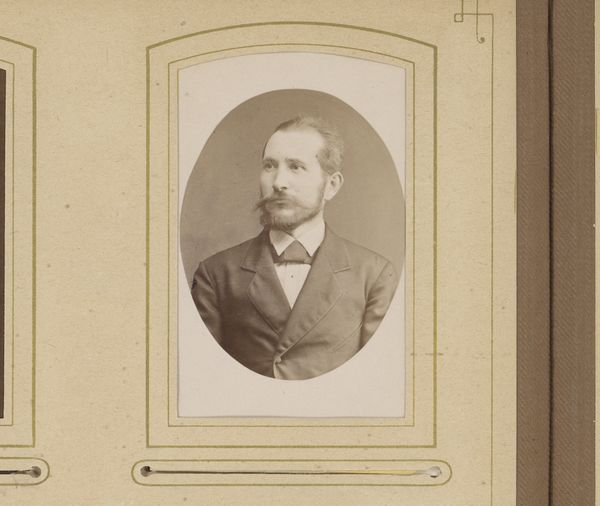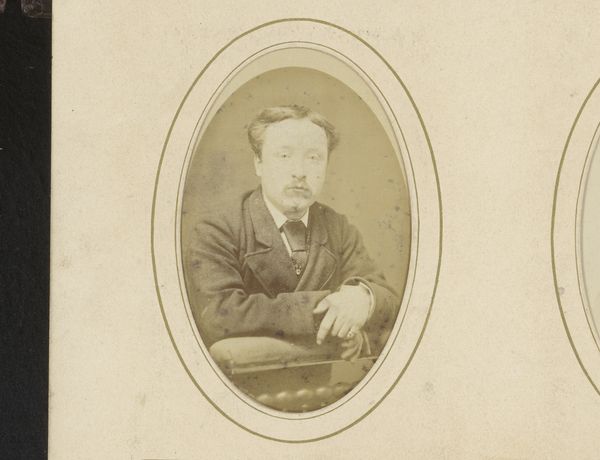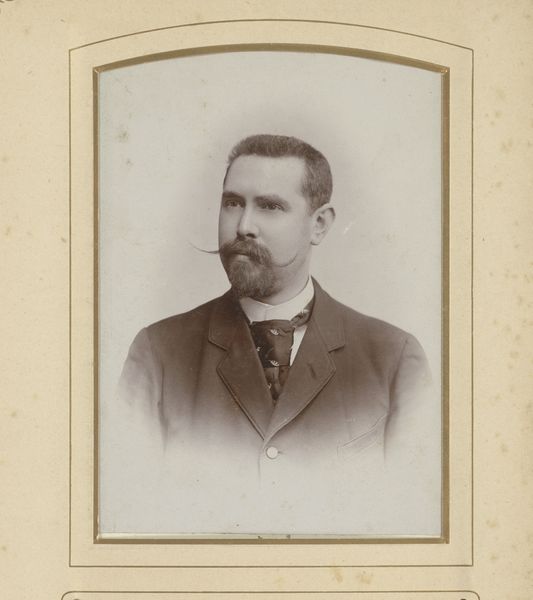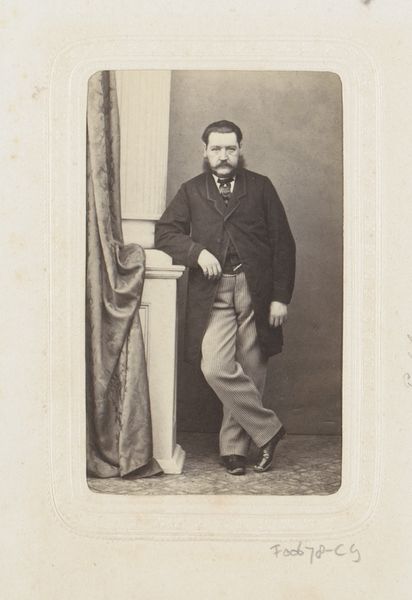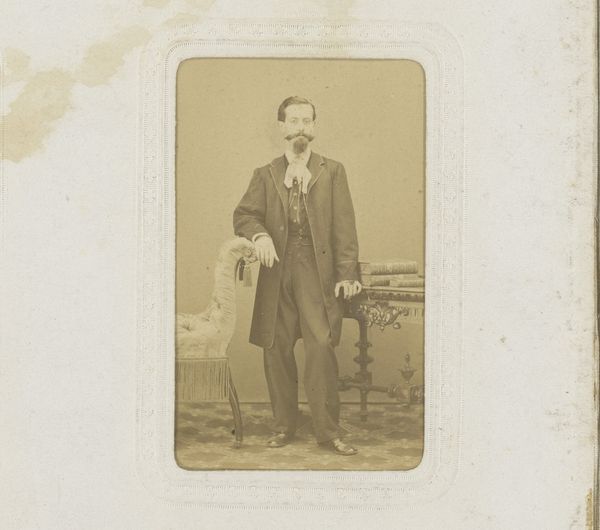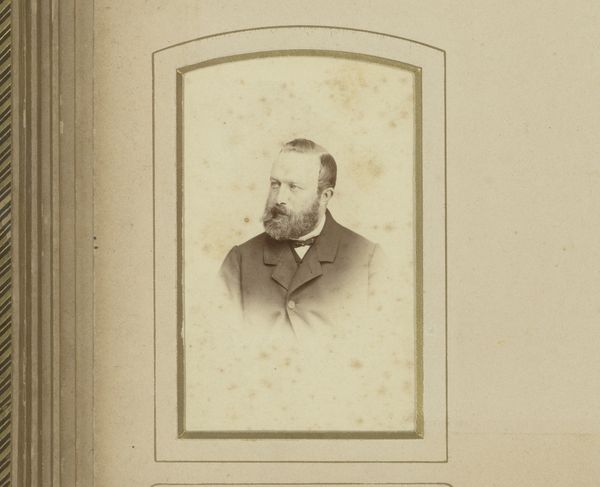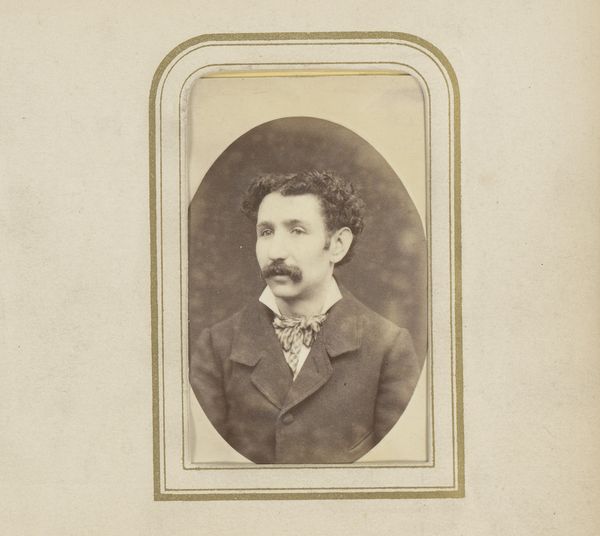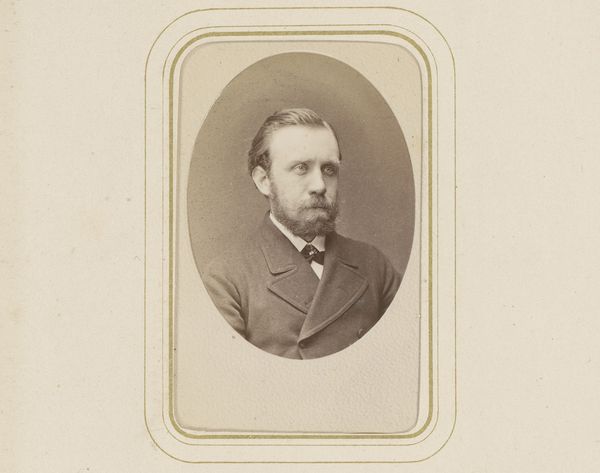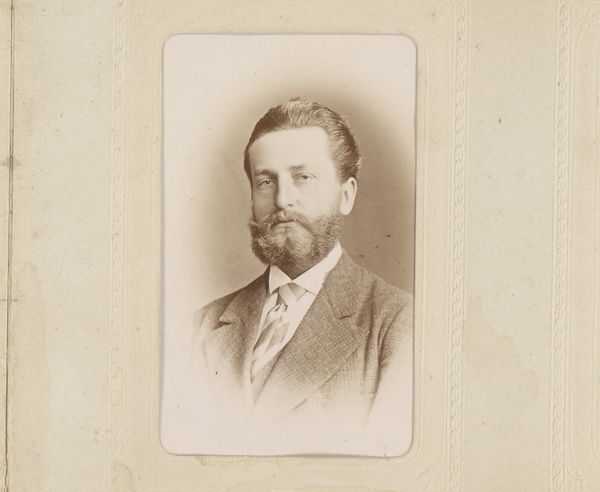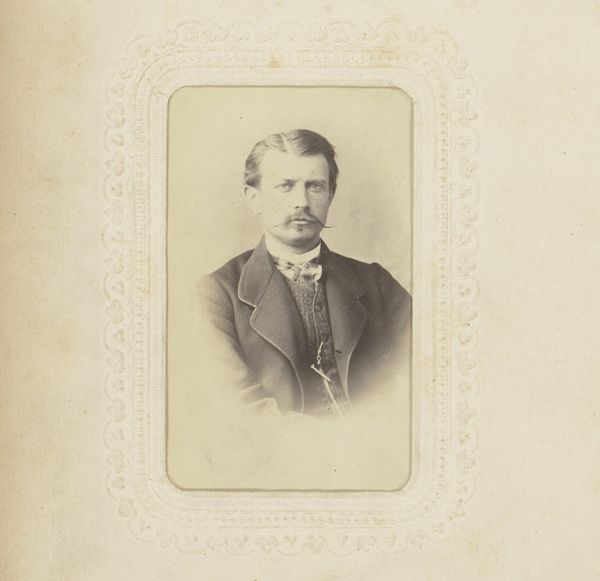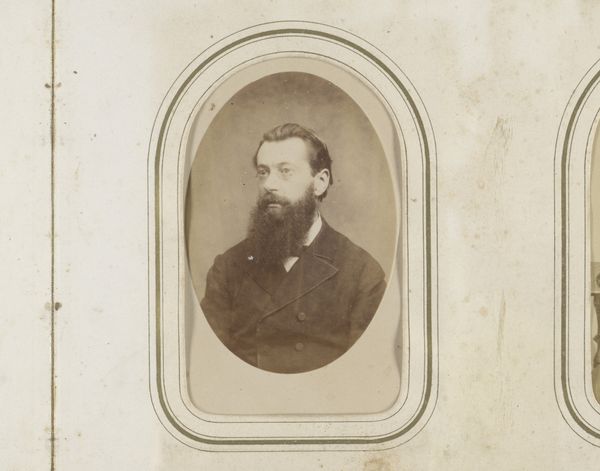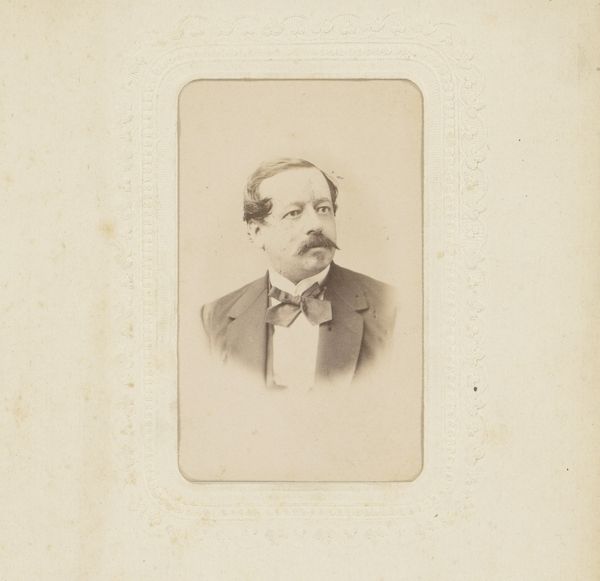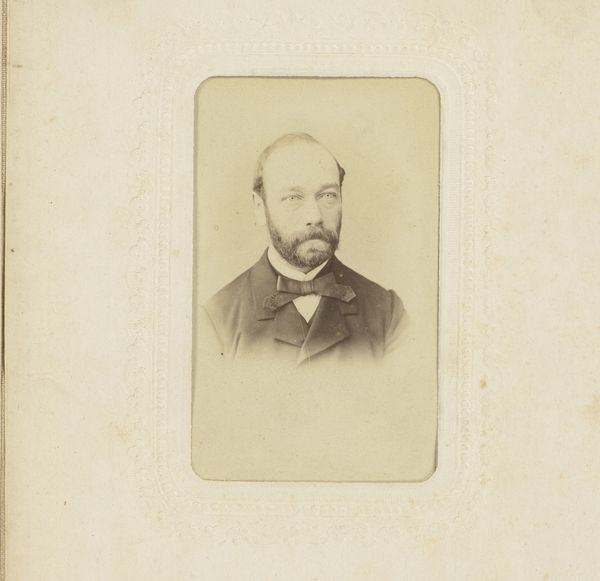
photography, gelatin-silver-print
#
portrait
#
charcoal drawing
#
photography
#
historical photography
#
gelatin-silver-print
#
19th century
#
academic-art
#
statue
Dimensions: height 85 mm, width 52 mm
Copyright: Rijks Museum: Open Domain
Curator: This gelatin-silver print, dating from the 1870s to 1880s, is titled "Portret van een man, leunend op een fauteuil"—"Portrait of a Man Leaning on an Armchair." The photographer is listed as A.D. Lewis. What strikes you first about this piece? Editor: The formality, certainly. There's a rigid structure in the man's pose, his arms crossed, the vertical lines of his coat and tie balanced against the soft curve of the chair. It creates an interesting tension. Curator: That tension speaks volumes about the social conventions of the time. The rising middle class sought to emulate aristocratic portraiture, creating a demand for these types of formal studio portraits. The labor involved, from preparing the chemicals to posing the subject, was quite extensive. It reveals much about the value placed on outward appearances. Editor: I see that, but formally, it's all about control. Notice how the limited tonal range enhances the textures of his beard and clothing? There's a deliberate artistic choice here, to draw the eye to these details. Curator: Precisely, these "details" reflected the economic status and aspirations of the sitter. The cut of his suit, the very presence of a photographer, speaks to a degree of affluence and participation in a rapidly changing world fueled by industrial production. Editor: Perhaps, but look again at how the light models his face, sculpting a very specific emotional state. His slightly averted gaze and subtle frown... the photograph transcends pure documentation and verges into psychological insight. Curator: I agree the aesthetic impact is undeniable but understanding photography’s accessibility to working- and middle-class citizens sheds light on the growing visibility of the bourgeoisie and shifts in social mobility throughout the late 19th century. Editor: Well, I appreciate how considering the societal framework enriches my understanding of his overall presence in the piece. Curator: And seeing the aesthetic considerations refines my understanding of its time!
Comments
No comments
Be the first to comment and join the conversation on the ultimate creative platform.
